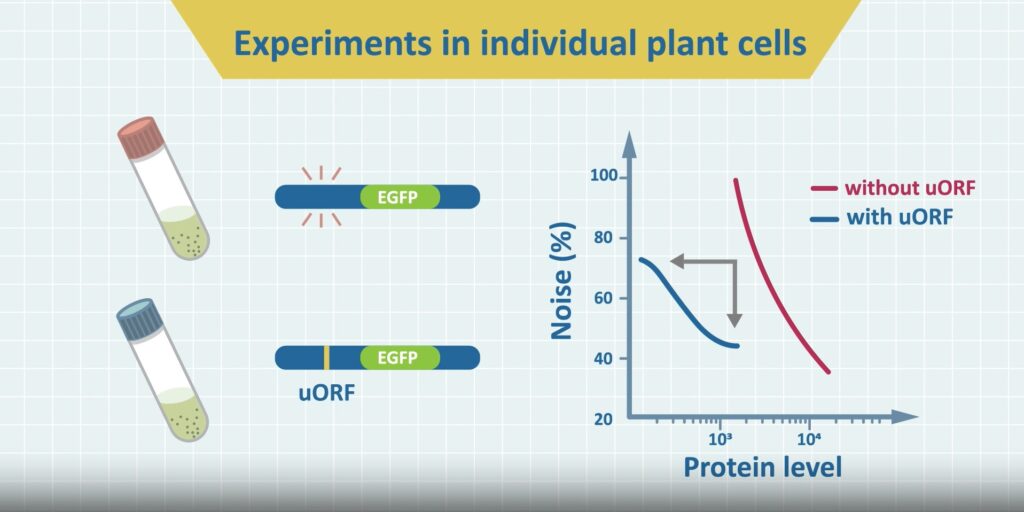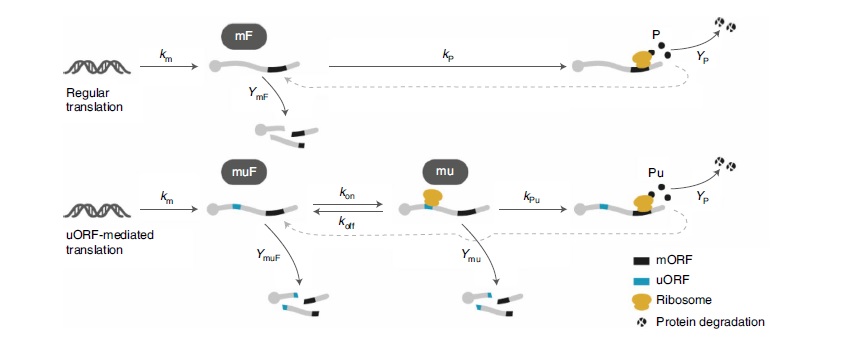
The term “circadian clock” is commonly used to describe the perception of time and the establishment of the circadian rhythm in humans. However, plants also possess a similar circadian clock system that regulates their growth state by sensing environmental signals through a series of gene expression regulations. Various factors can influence gene expression in both animal and plant cells. Effective cellular functions rely on seamless coordination of gene expression regulation, just as factories require quality management mechanisms to ensure consistent product quality. Proteins are the primary components of cells and the fundamental elements for performing physiological and biochemical functions. Therefore, maintaining the stability of the protein production line within cells is of utmost importance. By investigating the operation and regulatory mechanisms of the circadian clock system in plants, we can gain a deeper understanding of the internal workings of plant cells and how they overcome the challenges posed by bursts of gene expression to maintain a stable circadian cycle.
What is Gene Expression?
Gene expression is a fundamental biological process that involves the conversion of the DNA sequence within a gene into biological molecules such as proteins. This process includes transcription, where genes are transcribed into mRNA molecules, followed by translation, where mRNA is translated into proteins. Precise gene expression is crucial for the regulation and control of biological activities.
Is Gene Expression Stable within Cells?
Gene expression within cells is typically dynamic and variable, influenced by various intrinsic and environmental factors. While one might assume that the expression levels of the same gene would be consistent in identical cells under the same conditions, this is not always the case. Increasing research has revealed that the expression levels of mRNA and proteins vary among individual cells, and even within the same cell, the production of mRNA and proteins fluctuates over time. Changes in certain regulatory factors can lead to a surge in the transcriptional activity of certain genes, resulting in excessive gene expression. Such circumstances not only consume excessive cellular energy but also have the potential to damage cells and organisms. Therefore, cells must take proactive measures to regulate gene expression and maintain its stability and balance.
The Secret to Maintaining Stable Gene Expression in Plants
During the process of gene expression, mRNA is decoded by ribosomes and translated into proteins to carry out various biological functions. Prior to successful translation, ribosomes scan the 5’ leader sequence of mRNA. Interestingly, approximately 40% of plant genes have one or more regions in their 5′ leader sequence, known as “upstream open reading frames” (uORFs). uORFs is an open reading frame upstream of the main open reading frame (mORF). These uORFs contain start and stop codons that allow ribosomes to associate and dissociate. When mRNA contains translatable uORFs, the translation process begins with the translation of uORFs. It decreases the chance of ribosomes accessing the mORF, and thus represses protein production. As a result, it maintains the stability and balance of gene expression.
Dr. Shu-Hsing Wu from the Institute of Plant and Microbial Biology and Dr. Chao-Ping Hsu from the Institute of Chemistry at Academia Sinica conducted research on Arabidopsis to investigate the role of uORFs in protein stability. Through mathematical modeling and experimental validation, the research team demonstrated that uORFs can stabilize protein production. They further discovered that reducing gene expression noise has a crucial impact on the synchronization and stable operation of the plant cell’s circadian clock.
In this study, the researchers performed experiments using plant cells and compared the levels of fluorescent protein EGFP produced between the two constructs. One group contained uORFs, while the other group did not. The results revealed that the group with uORFs exhibited lower expression levels of EGFP, and the variability (noise) of protein levels among different cells was also reduced.

uORFs can reduce protein expression and noise, suggesting that cells utilize ribosomes to translate uORFs, allowing appropriate translational brakes for mRNA undergoing “bursty” transcriptional activity, thereby maintaining low and stable protein production.

Reference:
Wu HW, Fajiculay E, Wu JF, Yan CCS, Hsu CP* and Wu SH* (2022)
Noise reduction by upstream open reading frames. Nature Plants doi: 10.1038/s41477-022-01136-8
uORFs are Also Crucial for Stabilizing the Circadian Clock
Not only humans and other animals, but also plants and microorganisms have a circadian clock that synchronizes with the 24-hour day-night cycles of the external world.
In Arabidopsis, TIMING OF CAB EXPRESSION 1 (TOC1) is a key central oscillator of the circadian clock. It is involved in various clock-related processes, including gene expression, cell growth, flowering time, and plant responses to environmental stimuli. The mRNA of TOC1 contains four sets of uORFs, which contribute to maintaining low and stable levels of TOC1 protein, thereby ensuring the coordinated operation of the circadian clock among different plant cells.
Studies have revealed that the absence of uORF regulation leads to increased expression levels and variability of TOC1 protein, impacting not only the 24-hour functioning of the circadian clock in individual plants but also the synchronization of the circadian clock among different cells. This regulatory mechanism is of great importance for intracellular signaling factors, as cells employ uORFs as a “quality control” mechanism to ensure the stable production and function of essential protein molecules.
The Importance of the Circadian Clock in Plants
Finally, you may wonder about the significance of the circadian clock developed by plants to regulate day-night cycles.
The importance of the circadian clock in plants is undeniable. It is an internal mechanism that enables plants to regulate their intrinsic physiological and biochemical responses within a 24-hour cycle, synchronizing with the environment. This synchronization is crucial for the growth and reproduction of plants, as they need to perform various physiological and biochemical processes, such as photosynthesis, nutrient absorption, flowering, and seed production, at the right times. Without the circadian clock, plant growth and reproduction would be severely affected, leading to a loss of growth advantage and environmental adaptability. Therefore, understanding the regulatory mechanisms of the circadian clock and its role in plant growth and reproduction is vital. It helps us better understand plant life processes and provides valuable guidance for plant production and protection.
If you would like to learn more about uORFs, click on the video for a more in-depth understanding.

